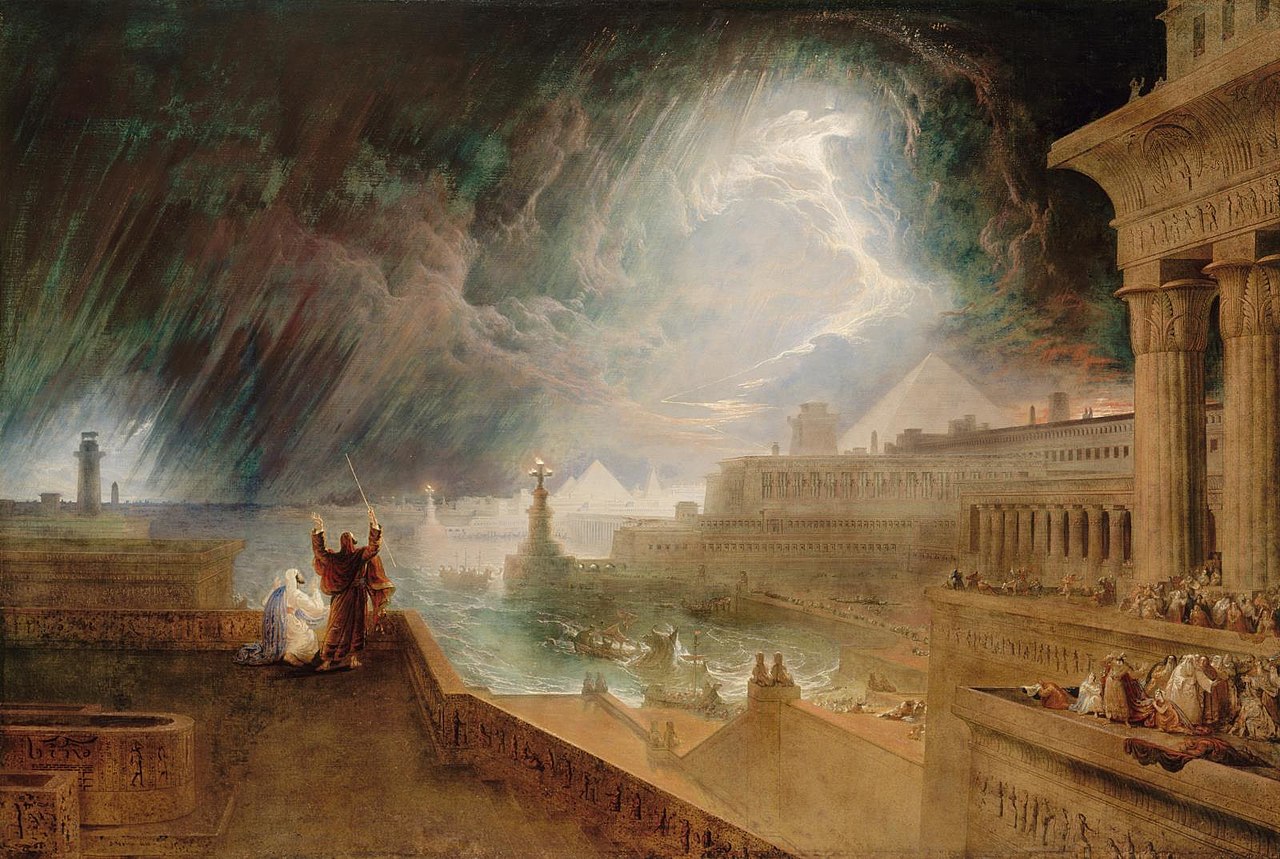The Seventh Plague by John Martin, Exodus 9:22-26, Bible.Gallery
Artwork Description

John Martin embarked upon his most ambitious endeavor with "Illustrations of the Bible," a project that stands as the pinnacle of his career. His vision encompassed the creation of a comprehensive folio containing forty exquisite depictions drawn from both the Old and New Testaments. The initial release in 1831 introduced parts featuring two mezzotints accompanied by pertinent passages from the Bible. The first seven installments garnered commendatory reviews, but the subsequent parts, VIII to X, emerged simultaneously and paradoxically went largely unnoticed by critics. Consequently, the venture suffered a commercial setback, leading Martin to sell the plates to Charles Tilt, a publisher, in 1838. Tilt's successor, David Bogue, sustained the circulation of these artworks until 1853.
One of Martin's renowned works, "The Seventh Plague of Egypt," portrays a tumultuous tempest looming over a harbor. The vantage point is from a terrace and staircase in the foreground, where Moses stands, his staff directed toward the chaotic scene.
John Martin (1789-1854) held distinction as an English painter, illustrator, and mezzotint engraver. He achieved immense popularity through his historical landscape paintings, characterized by their melodramatic portrayal of apocalyptic scenarios sourced from the Bible and other mythological narratives. Martin drew influence from notable artists like J.M.W. Turner (1775-1851), Theodore Gericault (1791–1824), Eugene Delacroix (1798–1863), and Paul Delaroche (1797–1856). His compositions stand out for their grand architectural settings and dynamic lighting. The majority of his artworks reached the public in the form of engravings, including book engravings, from which he amassed his fortune. Despite his widespread popularity, Martin faced rejection from critics, most notably from John Ruskin. Moreover, he remained excluded from the Royal Academy. Although his fame diminished swiftly after his passing, three of his most iconic religious artworks embarked on tours across Britain and America in the 1870s: "The Great Day of his Wrath" (1853, Tate, London), "The Last Judgment" (1853, Tate), and "The Plains of Heaven" (1851-3, Tate). A pivotal contributor to English landscape painting, Martin significantly influenced Thomas Cole (1801-48), a founding figure of the Hudson River School.